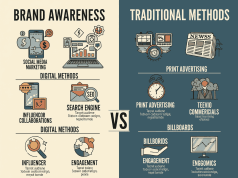As we step into 2025, the landscape of advertising technology is rapidly evolving, shaped by the rise of new technologies, shifting consumer behaviors, and stringent regulatory frameworks. For marketers and businesses looking to thrive in this digital age, understanding the key trends in advertising technology is critical. Here, we explore some of the most significant trends that are set to shape the future of advertising.
1. Artificial Intelligence and Machine Learning
AI and machine learning continue to revolutionize the advertising sector by enhancing personalization and targeting. In 2025, expect to see more sophisticated algorithms that not only analyze consumer behavior but also predict future purchasing patterns. Brands will increasingly utilize AI to optimize ad placements in real time, resulting in more effective campaigns that resonate with their target audiences.
Key Takeaway:
Investing in AI-driven tools can improve campaign performance by making real-time adjustments based on consumer interactions.
2. Increased Focus on Privacy and Data Security
With the introduction of stricter privacy regulations such as GDPR and CCPA, concerns regarding data security are at an all-time high. In 2025, marketers must prioritize transparency and ethical data practices. This shift will likely lead to the adoption of privacy-first advertising solutions, such as cookieless tracking technologies and first-party data initiatives, that respect consumer preferences while still providing valuable insights.
Key Takeaway:
Brands should invest in technologies that prioritize consumer privacy and build trust through transparent data collection practices.
3. Rise of Blockchain Technology
Blockchain technology is making waves in advertising by enhancing transparency and accountability. In 2025, we can expect broader adoption of blockchain for ad verification, which can help combat ad fraud and ensure that advertisers only pay for ads that are genuinely viewed by real users. This trend will foster trust between advertisers and publishers, ensuring fair compensation for ad placements.
Key Takeaway:
Embracing blockchain can improve trust and efficiency in digital advertising transactions, paving the way for more transparent practices.
4. Content Marketing and Interactive Experiences
As consumers increasingly seek engaging content, brands are focusing on storytelling and interactive experiences. In 2025, we’ll see a rise in AR and VR advertising, allowing consumers to engage with brands in immersive ways. Interactive content, such as polls, quizzes, and shoppable videos, will become central to advertising strategies as they boost engagement and conversion rates.
Key Takeaway:
Utilizing interactive and immersive content can significantly enhance user engagement and create memorable brand experiences.
5. Sustainability and Social Responsibility
Consumers today are more conscious of social and environmental issues, expecting brands to align with their values. In 2025, sustainability in advertising will gain prominence, with companies focusing on green marketing strategies. Utilizing eco-friendly practices and promoting social responsibility can enhance brand loyalty and positively influence consumer behavior.
Key Takeaway:
Adopting sustainable practices and messaging can distinguish a brand in a crowded market, attracting consumers who prioritize ethical considerations.
6. Omnichannel Marketing
A seamless omnichannel approach is crucial in today’s fragmented digital landscape. In 2025, businesses will enhance their advertising strategies by ensuring a consistent message across all platforms, including social media, email, and digital ads. This integrated approach will facilitate a cohesive customer journey, leading to improved brand loyalty and higher conversion rates.
Key Takeaway:
Investing in Omnichannel marketing tools can create a unified brand experience, increasing customer retention and satisfaction.
7. Voice and Visual Search Optimization
As smart speakers and visual search technologies advance, optimizing for voice and visual search will become essential in 2025. Advertisers will need to adapt their strategies to cater to these trends, ensuring their content is easily discoverable through voice commands and image searches. This shift underscores the importance of SEO and content optimization.
Key Takeaway:
Focusing on voice and visual search optimization can enhance discoverability in an evolving digital marketplace.
Conclusion
The advertising technology landscape in 2025 is poised for significant transformation, driven by technological advancements and changing consumer expectations. By leveraging AI, embracing privacy, adopting blockchain solutions, and focusing on sustainability, brands can navigate this digital age effectively. Understanding and adapting to these key trends will be essential for marketers seeking to create impactful, engaging, and responsible advertising campaigns that resonate with their audiences. As we tread into this new era, the brands that prioritize innovation and consumer trust will undoubtedly lead the way.









